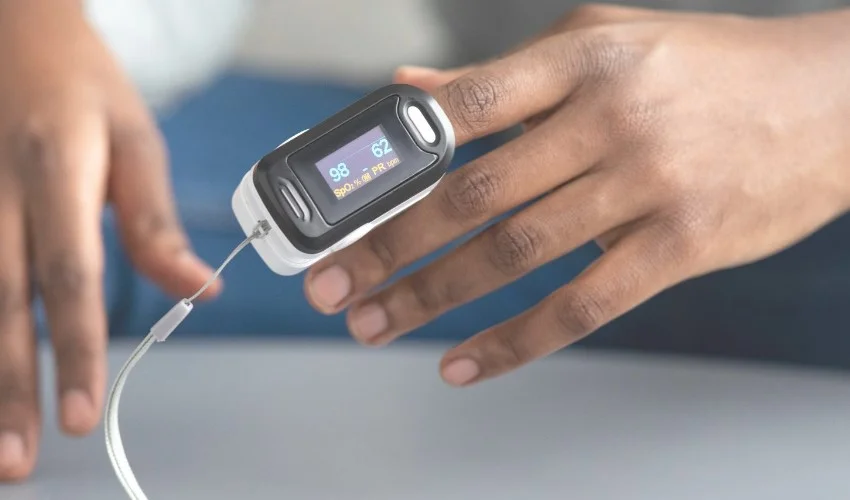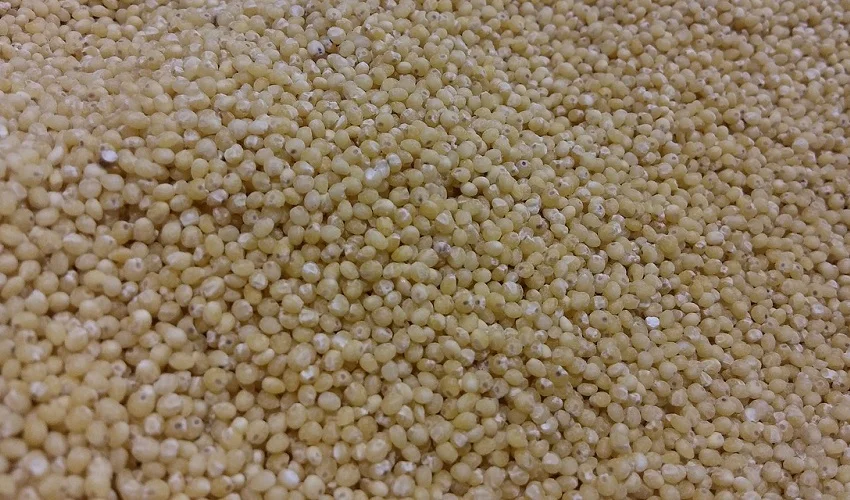Living with diabetes requires careful monitoring and management of blood sugar levels. By understanding blood sugar patterns and identifying trends, individuals with diabetes and their caregivers can make informed decisions to optimize their treatment and improve overall health. In this article, we will explore the importance of tracking blood sugar patterns, discuss common trends to look for, and provide practical strategies for effectively managing diabetes. By the end, you will have a comprehensive understanding of how to monitor and interpret blood sugar patterns to support your diabetes management journey.
The Importance of Tracking Blood Sugar
Understanding Blood Sugar Levels
Blood sugar, or glucose, is a vital source of energy for the body. It comes from the food we eat and is regulated by insulin, a hormone produced by the pancreas. In people with diabetes, the body either doesn’t produce enough insulin (Type 1 diabetes) or doesn’t use it effectively (Type 2 diabetes). This leads to elevated blood sugar levels, which, if left unmanaged, can cause various complications.
The Role of Blood Sugar Monitoring
Monitoring blood sugar levels is crucial for individuals with diabetes. It provides valuable information about how the body is responding to treatment, helps identify patterns, and enables timely adjustments to medication, diet, and lifestyle. By tracking blood sugar, you can understand the impact of different factors on your glucose levels, empowering you to make informed choices to maintain stability.
Long-term Benefits of Tracking Blood Sugar
Consistently tracking blood sugar levels and identifying trends can have significant long-term benefits. It allows individuals to:
- Detect hyperglycemia and hypoglycemia episodes promptly, reducing the risk of complications.
- Assess the effectiveness of diabetes management strategies and make necessary adjustments.
- Understand how various foods, activities, stress, and medications impact blood sugar.
- Collaborate with healthcare providers for better treatment decisions.
- Gain a sense of empowerment and control over their diabetes management.
Tools and Methods for Blood Sugar Monitoring
Self-Monitoring of Blood Glucose (SMBG)
Self-monitoring of blood glucose (SMBG) involves using a glucose meter to measure blood sugar levels at home. This method requires a finger-prick to obtain a small blood sample, which is then applied to a test strip and inserted into the meter. SMBG is convenient, widely available, and allows individuals to monitor their blood sugar levels at different times of the day.
Continuous Glucose Monitoring (CGM)
Continuous Glucose Monitoring (CGM) is an advanced technology that provides real-time glucose readings throughout the day. A CGM system consists of a small sensor placed under the skin, which measures glucose levels in the interstitial fluid. The sensor transmits data wirelessly to a receiver or smartphone, displaying current levels and trends. CGM offers a more comprehensive view of blood sugar patterns and trends, enabling timely interventions.
Choosing the Right Monitoring Method
The choice between SMBG and CGM depends on individual needs, lifestyle, and financial considerations. SMBG is suitable for individuals who require intermittent monitoring or prefer a cost-effective method. CGM is recommended for those seeking continuous monitoring and desiring a more detailed analysis of blood sugar patterns. Discuss with your healthcare provider to determine the most suitable monitoring method for your situation.
Identifying Common Blood Sugar Patterns
Understanding common blood sugar patterns can provide valuable insights into diabetes management. Here are some essential patterns to be aware of:
Fasting Hyperglycemia
Fasting hyperglycemia refers to elevated blood sugar levels in the morning after fasting overnight. It can result from the dawn phenomenon or the Somogyi effect. The dawn phenomenon occurs due to the release of hormones that raise blood sugar levels in the early morning. The Somogyi effect, on the other hand, is a rebound response to low blood sugar levels during the night, triggering a counter-regulatory hormone release.
Postprandial Hyperglycemia
Postprandial hyperglycemia refers to high blood sugar levels after meals. It is essential to monitor and manage postprandial glucose as it plays a significant role in overall glycemic control. Consistently elevated postprandial levels can contribute to long-term complications. Monitoring blood sugar after meals can help identify specific foods or eating patterns that affect glucose levels.
Dawn Phenomenon
The dawn phenomenon is a natural physiological response that causes a rise in blood sugar levels in the early morning. Hormones, such as cortisol and growth hormone, promote the release of glucose into the bloodstream, leading to elevated fasting glucose levels. Tracking the dawn phenomenon can help determine the appropriate timing of medication or insulin to maintain target blood sugar levels.
Hypoglycemia
Hypoglycemia occurs when blood sugar levels drop below normal. It can result from excessive insulin or medication, delayed or missed meals, increased physical activity, or alcohol consumption. Recognizing the signs of hypoglycemia, such as shakiness, sweating, confusion, and dizziness, is crucial for prompt intervention. Monitoring blood sugar can help identify patterns and triggers, enabling adjustments to medication, diet, or physical activity to prevent hypoglycemic episodes.
Glycemic Variability
Glycemic variability refers to fluctuations in blood sugar levels throughout the day. It can be influenced by various factors, including meals, physical activity, stress, illness, and medication. Monitoring glycemic variability helps identify patterns and trends, enabling adjustments in diabetes management strategies to achieve more stable blood sugar control.
Analyzing Blood Sugar Trends
Tracking Patterns Over Time
Tracking blood sugar over an extended period allows individuals to identify recurring patterns and trends. Maintaining a blood sugar log or using digital tools can help visualize data and highlight patterns that might not be apparent otherwise. By reviewing blood sugar trends, individuals can recognize relationships between lifestyle factors, medication, and glucose levels.
Utilizing Technology for Data Analysis
Digital health platforms and mobile applications provide data analysis tools that can assist in tracking blood sugar trends. These tools can generate reports, graphs, and charts to visualize patterns, averages, and target ranges. Such analysis can help individuals understand their unique glucose patterns, evaluate the effectiveness of management strategies, and make informed decisions.
Identifying Triggers and Patterns
Analyzing blood sugar trends can reveal triggers that affect glucose levels. By tracking patterns, individuals can identify specific foods, physical activities, stressors, or other factors that consistently impact blood sugar. Recognizing these triggers empowers individuals to make targeted changes to their lifestyle, medication, or meal plans to better manage their diabetes.
Strategies for Managing Blood Sugar Trends
Lifestyle Modifications
Lifestyle modifications play a crucial role in managing blood sugar levels. Regular physical activity, maintaining a healthy weight, and adopting a balanced diet rich in whole grains, fruits, vegetables, and lean proteins can contribute to better glycemic control. Monitoring blood sugar patterns helps evaluate the effectiveness of these lifestyle changes and supports the implementation of sustainable habits.
Medication Adjustments
Tracking blood sugar patterns allows individuals and healthcare providers to assess the effectiveness of current medications. If blood sugar remains consistently high or low, adjustments in medication dosage, timing, or type may be necessary. Collaborating with healthcare providers is essential in making informed decisions about medication adjustments to achieve optimal blood sugar control.
Dietary Approaches
Monitoring blood sugar levels helps individuals identify foods that cause significant fluctuations in glucose. This knowledge allows for targeted dietary adjustments. For example, individuals can choose low glycemic index (GI) foods that have a slower impact on blood sugar levels, or they can distribute carbohydrate intake more evenly throughout the day. Blood sugar tracking helps evaluate the impact of dietary changes and refine meal plans accordingly.
Regular Physical Activity
Engaging in regular physical activity can help manage blood sugar levels. Monitoring blood sugar before, during, and after exercise can provide insights into how different activities affect glucose levels. It enables individuals to adjust their exercise regimen, timing, or carbohydrate intake to maintain target blood sugar ranges.
Stress Management
Stress can influence blood sugar levels. Monitoring glucose patterns during stressful periods can highlight the impact of stress on glycemic control. Engaging in stress-management techniques such as relaxation exercises, mindfulness, or seeking support from mental health professionals can help individuals better manage their blood sugar.
Collaborating with Healthcare Providers
Regular Medical Checkups
Regular medical checkups are essential for individuals with diabetes. They allow healthcare providers to assess overall health, monitor blood sugar control, and identify any potential complications. Sharing blood sugar data during these checkups provides a comprehensive picture of diabetes management and assists in making informed treatment decisions.
Sharing Data with Healthcare Providers
Sharing blood sugar data with healthcare providers facilitates a collaborative approach to diabetes management. Healthcare providers can analyze patterns, identify areas for improvement, and make evidence-based recommendations. Digital platforms and mobile applications that enable data sharing can enhance communication and streamline care.
Seeking Professional Guidance
Seeking professional guidance from diabetes educators, dietitians, or endocrinologists is invaluable in understanding blood sugar patterns and identifying trends. These professionals can provide personalized advice, review glucose data, and assist in creating tailored management plans. Collaborating with a healthcare team ensures comprehensive care and improved outcomes.
Leveraging Technology for Blood Sugar Tracking
Diabetes Mobile Applications
Diabetes mobile applications offer features for blood sugar tracking, data analysis, medication reminders, and lifestyle management. These apps allow individuals to record and visualize blood sugar patterns conveniently. Many apps also offer educational resources, meal planning, and integration with CGM devices or wearable technology.
Digital Health Platforms
Digital health platforms provide comprehensive tools for blood sugar tracking, data analysis, and reporting. These platforms often integrate with other health tracking devices and electronic health records, allowing for a holistic view of health information. The ability to share data with healthcare providers streamlines communication and facilitates collaborative care.
Integration with Wearable Devices
Wearable devices, such as smartwatches or fitness trackers, can integrate with blood sugar monitoring systems. This integration allows individuals to track blood sugar trends in real-time and receive alerts for high or low blood sugar levels. Wearable devices can also monitor physical activity, heart rate, and sleep patterns, providing a more holistic understanding of overall health.
Educating and Engaging with Support Networks
Diabetes Education Programs
Diabetes education programs provide essential knowledge and skills to manage diabetes effectively. These programs cover topics such as blood sugar monitoring, healthy eating, medication management, and lifestyle modifications. Participating in diabetes education programs empowers individuals with the necessary tools to monitor and interpret blood sugar patterns accurately.
Online Communities and Support Groups
Online communities and support groups offer a platform for individuals with diabetes and their caregivers to connect, share experiences, and exchange information. Participating in these communities provides emotional support, practical tips, and the opportunity to learn from others’ experiences. Engaging with support networks can enhance motivation and provide a sense of belonging in the diabetes management journey.
Involving Caregivers in the Monitoring Process
For individuals who require assistance with blood sugar monitoring, involving caregivers in the process is crucial. Caregivers can help track blood sugar levels, analyze trends, and support decision-making. Collaboration with caregivers ensures a comprehensive approach to blood sugar tracking and management.
Tracking blood sugar patterns and identifying trends is essential for effective diabetes management. By using tools like self-monitoring of blood glucose (SMBG) and continuous glucose monitoring (CGM), individuals with diabetes can gain insights into their blood sugar levels. Analyzing blood sugar trends over time, identifying patterns, and making appropriate lifestyle adjustments can significantly impact long-term health outcomes. Leveraging technology and collaborating with healthcare providers can further enhance diabetes management efforts. Remember, education and support networks play a crucial role in maintaining motivation and staying informed. By monitoring blood sugar patterns diligently and making informed decisions, individuals with diabetes can lead healthier and more fulfilling lives.




